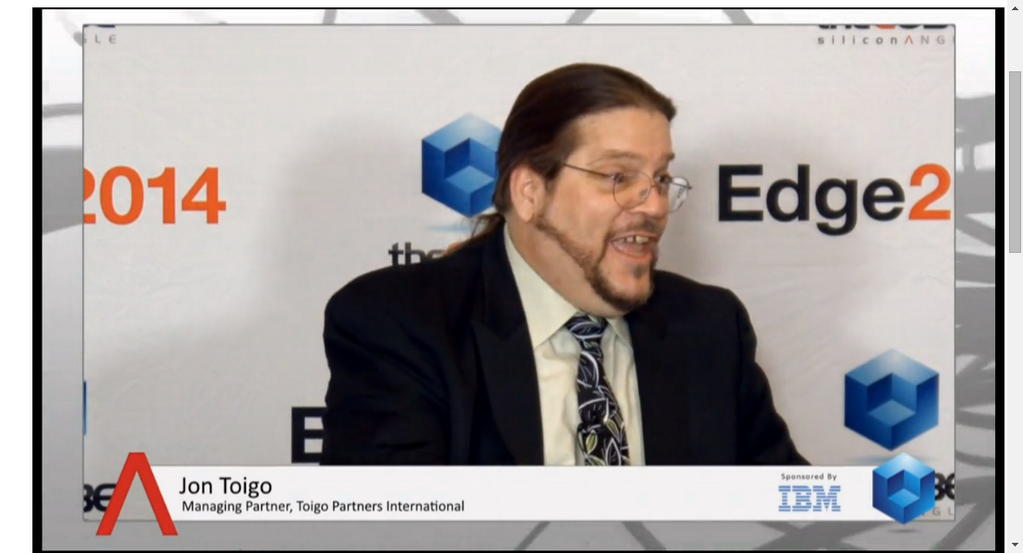 NEWS
NEWS
 NEWS
NEWS
 NEWS
NEWS
![]() The IBM Edge 2014 show kicked off today in Las Vegas, bringing together more than 5,500 technology leaders and practitioners from all industries to learn the latest in infrastructure innovation. Dave Vellante and Jeff Frick invited Jon Toigo – Managing Partner at Toigo Partners International – to theCUBE, to discuss software-defined trends and the TAPE Renaissance.
The IBM Edge 2014 show kicked off today in Las Vegas, bringing together more than 5,500 technology leaders and practitioners from all industries to learn the latest in infrastructure innovation. Dave Vellante and Jeff Frick invited Jon Toigo – Managing Partner at Toigo Partners International – to theCUBE, to discuss software-defined trends and the TAPE Renaissance.
An advocate for all the IT practitioners, Toigo noted that the software-defined trend is “an alluring concept, like a LEGO-building-block approach to building infrastructure, allocating resources on the fly for a specific environment, getting to atomic units of deployable technology, and being able to shape those into the molecules that we need in order to do our jobs.”
In concept and theory, software-defined is the way it should be, thinks Toigo.
In Toigo’s opinion, software-defined presents some problems, such as the syntactic problem: “There has always been software-defined, but now it’s got a different spin, with the cloud, as a service and with virtualization,” he said. Also, the need for Disaster Recovery goes away as software-defined is all about highly-available architecture.
“We’ve always had high-availability as part of the set of options to do disaster recovery, but it was just so expensive to replicate everything somewhere else, that only companies with the deepest pockets could afford to do it. Disaster recovery isn’t just about perfection, but about budget too,” added Jon Toigo.
“How will the whole notion of DR business continuity change as a result of software-defined?” asked Vellante.
“I would have to create a continuity plan simultaneously with whatever program I’m using to roll out any kind of software-defined. The deficits of virtualization are the processor pulling, processor abstraction, and they are bringing in a new set of potential problems for disaster recovery. We’ve seen this before, 20 years ago, before PRISM was introduced and before isolating workloads was possible,” answered Toigo.
Watch the entire interview below to see Jon Toigo’s take on the competing interests at IBM, on the truly open OpenStack platform, and on storage cartel.
Jon Toigo is the author of 17 books on business technology and has signed over 2000 articles and seven on-going columns in the technology trade press.
Support our mission to keep content open and free by engaging with theCUBE community. Join theCUBE’s Alumni Trust Network, where technology leaders connect, share intelligence and create opportunities.
Founded by tech visionaries John Furrier and Dave Vellante, SiliconANGLE Media has built a dynamic ecosystem of industry-leading digital media brands that reach 15+ million elite tech professionals. Our new proprietary theCUBE AI Video Cloud is breaking ground in audience interaction, leveraging theCUBEai.com neural network to help technology companies make data-driven decisions and stay at the forefront of industry conversations.